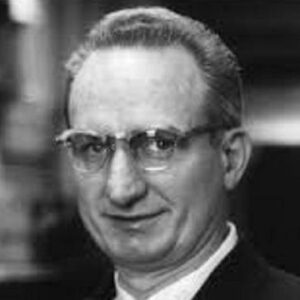Leo James Rainwater was an American physicist who won the 1975 Nobel Prize in Physics for his research into the asymmetrical shapes of certain atomic nuclei. He also contributed to the Manhattan Project, which resulted in the first atomic bombs being developed. He preferred to be referred to by his middle name, which he was called throughout his life. When he was barely a year old, he lost his father, and his mother relocated to California. He demonstrated his abilities in school as an exceptionally gifted student of science, excelling in mathematics, chemistry, and physics. Due to his natural aptitude for science, he placed highly in a California Institute of Technology chemistry competition and was admitted to the institute as a result. He earned a bachelor’s degree in physics and then pursued a master’s degree at Columbia University, where he spent the remainder of his career. Apart from his work on atomic nuclei, his studies advanced our understanding of X-rays.
Childhood & Adolescence
Leo James Rainwater was born on 9 December 1917 in Council, Idaho, to Leo Jaspar Rainwater and Edna Eliza Rainwater. His father was trained as a civil engineer but relocated to Council from California to run a general store.
His father died during the 1918 influenza epidemic. His mother made the decision to relocate to California from Council. They traveled to Hanford, California, where his mother remarried several years later. Throughout his school years, James Rainwater was a gifted science student.
He was admitted to the institute as a result of his performance in a chemistry competition sponsored by the prestigious California Institute of Technology.
He studied physics at the institute and earned a Bachelor of Science degree in 1939. He then enrolled at Columbia University for postgraduate studies and graduated two years later with a Master of Arts degree.
Career of James
He studied physics at Columbia University under luminaries such as Enrico Fermi, John Dunning, and Edward Teller. He was also a member of the Manhattan Project, which began in 1942 with the goal of developing nuclear weapons.
He worked at the Substitute Alloy Materials Laboratories during the Manhattan Project, and his neutron spectrometer was used to conduct research on neutron cross sections. Following the war’s conclusion, his work on the Manhattan Projects was declassified.
In 1946, he earned a doctorate with a dissertation titled ‘neutron beam spectrometer studies of boron, cadmium, and the energy distribution from paraffin’.
Following the war’s conclusion, he returned to academia and continued to work as an instructor at Columbia University. He began work on his most significant project in 1949, when he began researching his theory that all atoms’ nuclei are not spherical in shape. Aage Bohr, a Danish scientist, confirmed his theories through experiments, and Ben Mottelson assisted him in publishing his findings. Three papers were presented in total.
The Office of Naval Research funded his research at Nevis Laboratories to develop the particle accelerating instrument Synchroton. He built the instrument in 1950 and was appointed director of Nevis Laboratories the following year. From 1951 to 1954, and again from 1957 to 1961, he served as director of Nevis Laboratories.
He was appointed a full professor at Columbia University in 1952. Additionally, he was involved in research on muonic atoms, which became one of his most significant endeavors. He remained at Columbia University and was appointed Michael I. Pupin Professor of Physics in 1983.
Significant Works of James
Rainwater’s most significant work was his theory on the shape of the nuclei of various atoms, which dispelled the myth that all atomic nuclei were spherical. He was awarded a joint Nobel Prize in Physics for this achievement.
Awards and Accomplishments
In 1963, he received the Ernest Orlando Lawrence Awards. In 1975, James Rainwater shared the Nobel Prize in Physics with Aage Bohr and Ben Mottelson “for establishing a link between collective motion and particle motion in atomic nuclei and developing a theory of the structure of the atomic nucleus based on this connection.”
Personal History and Legacies
In March 1942, James Rainwater married Emma Louise Smith. The couple was blessed with three sons and one daughter. He died of cardiopulmonary arrest in New York on 31 May 1986, at the age of 68.
Estimated Net Worth
The net worth of James is $1-$5million.


